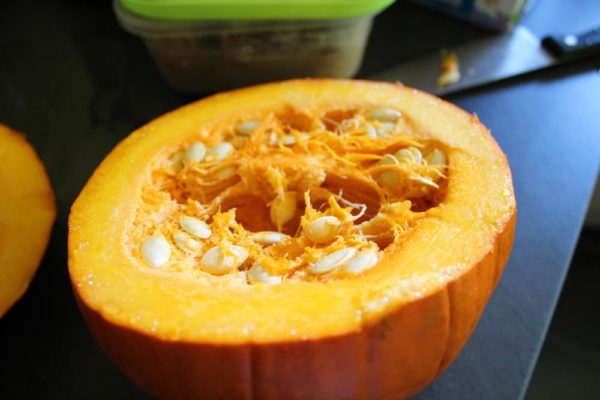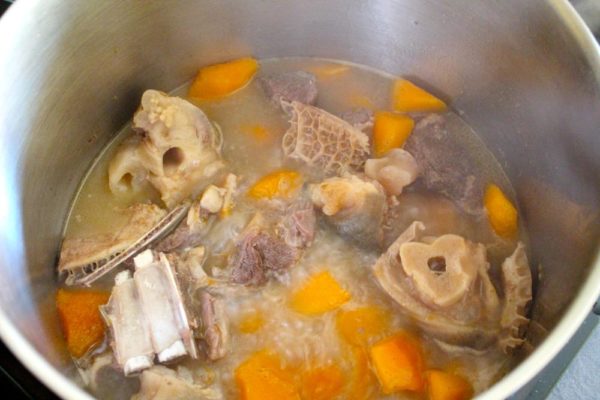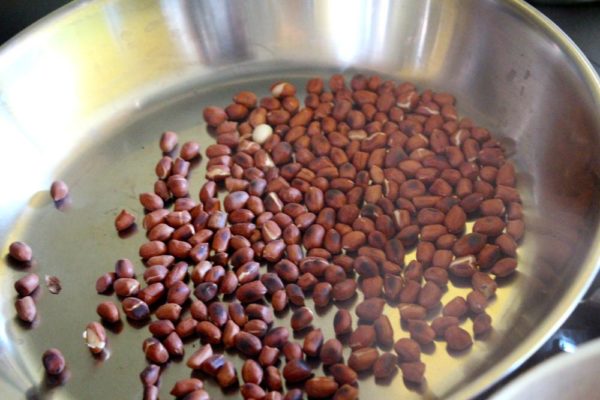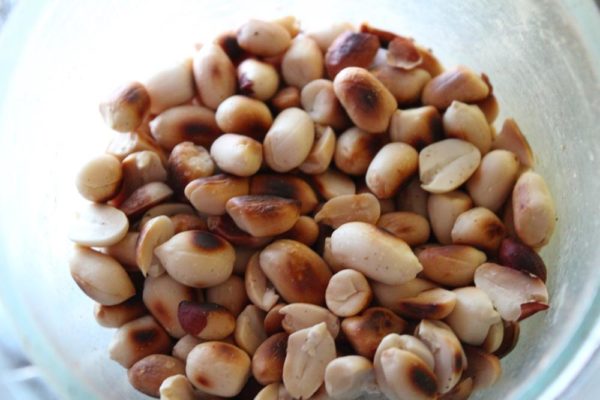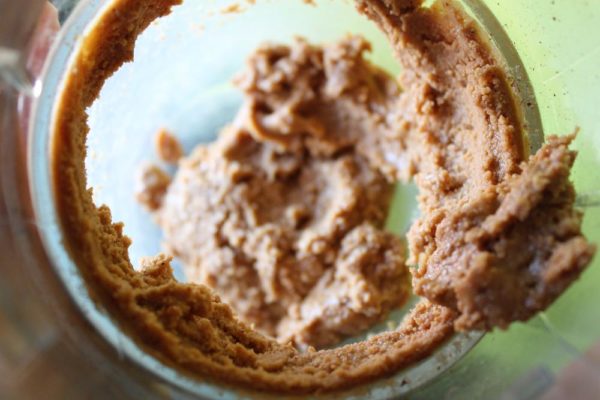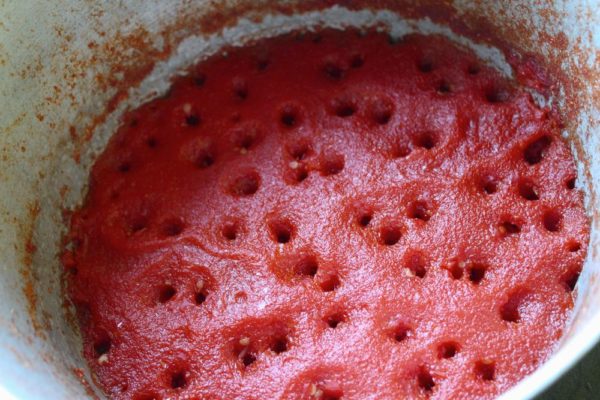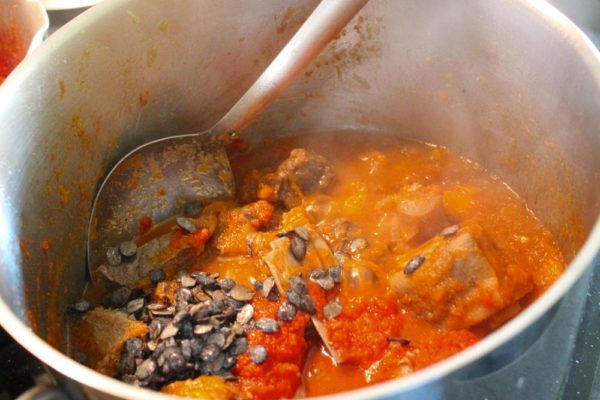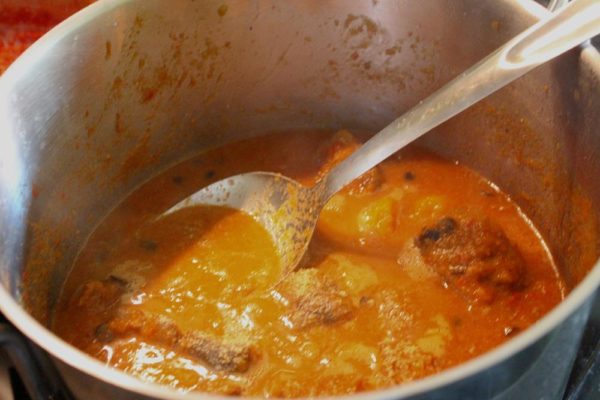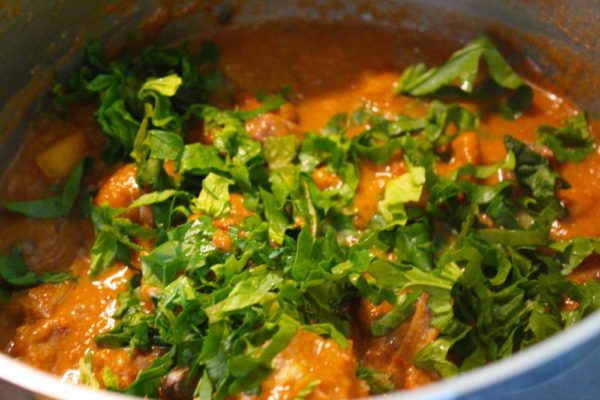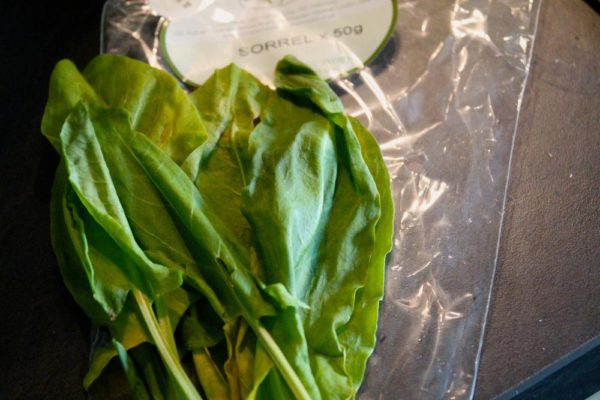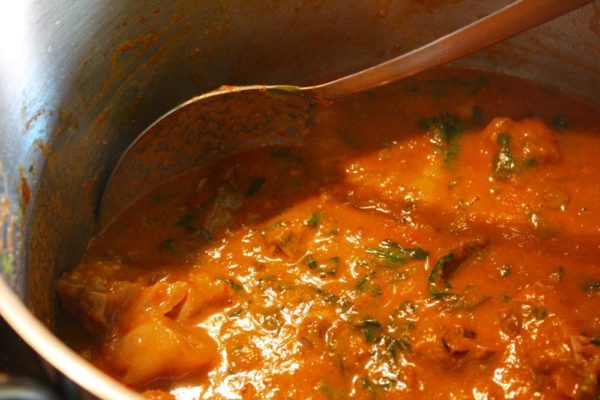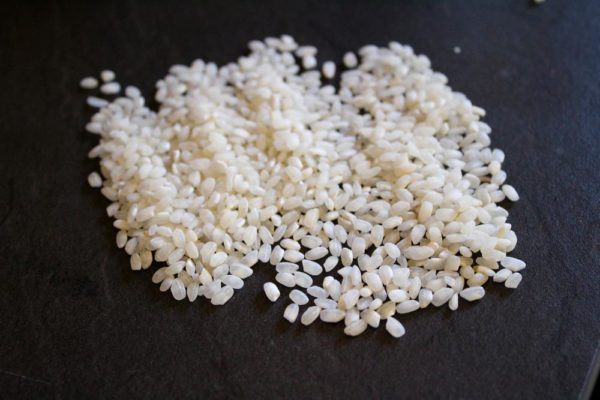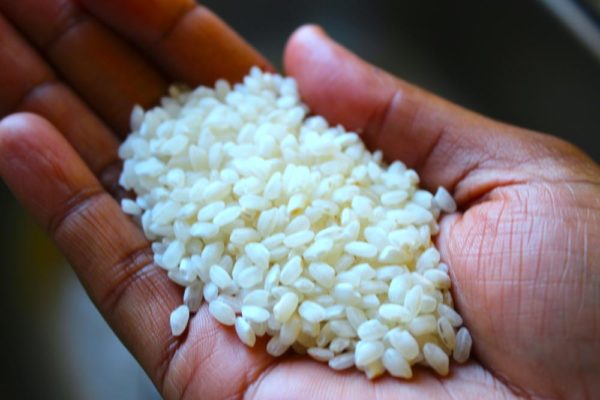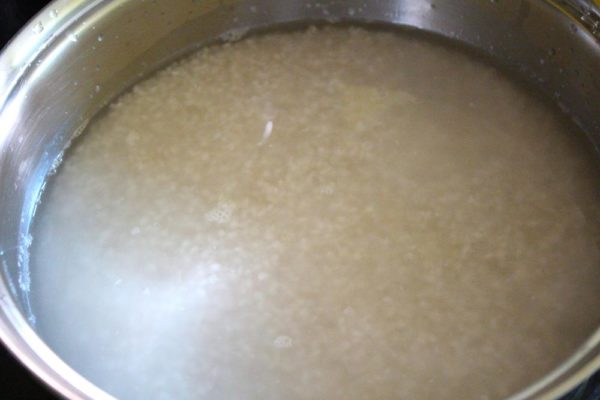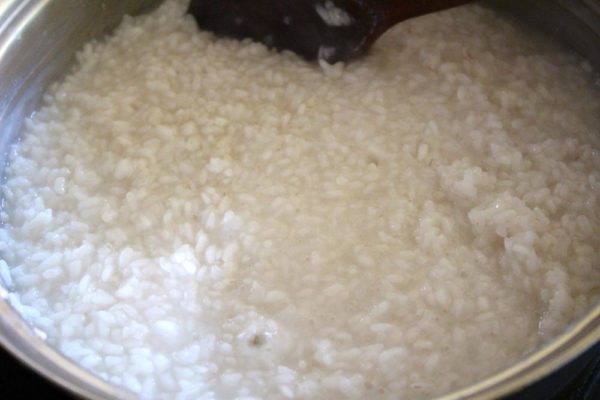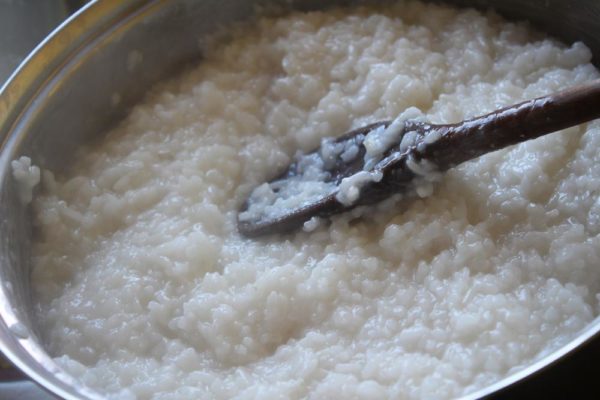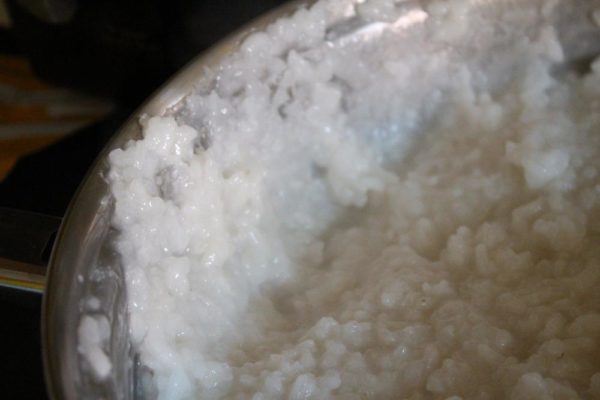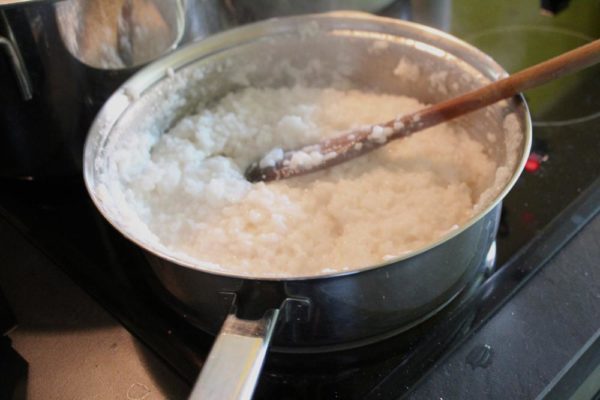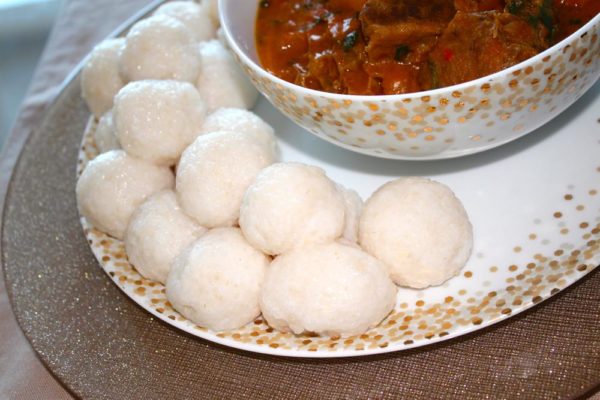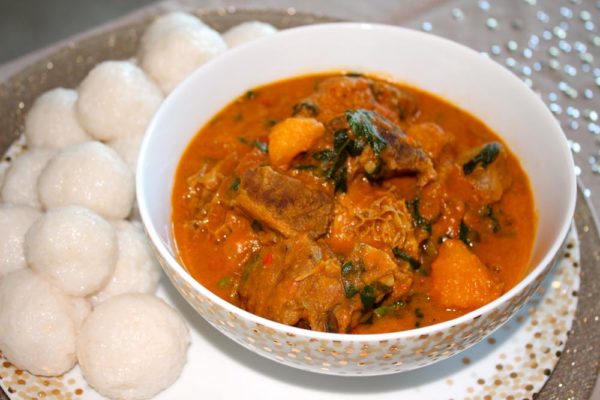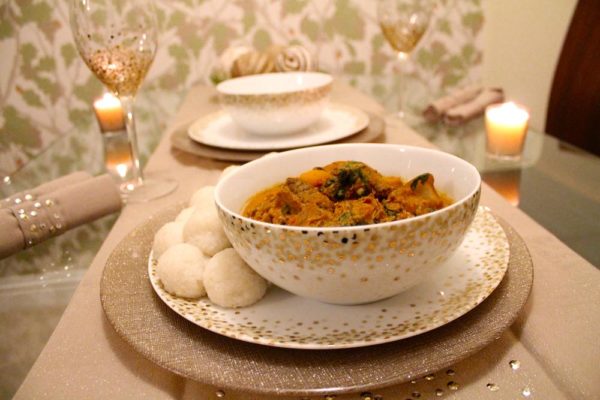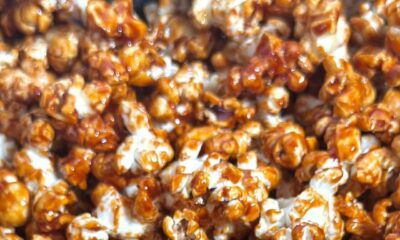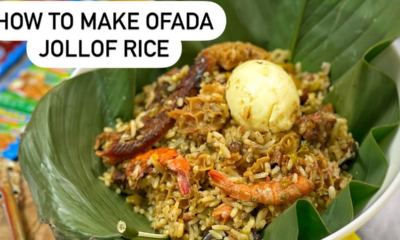News
BN Cuisine with Dooney’s Kitchen: Miyan Taushe & Tuwo Shinkafa
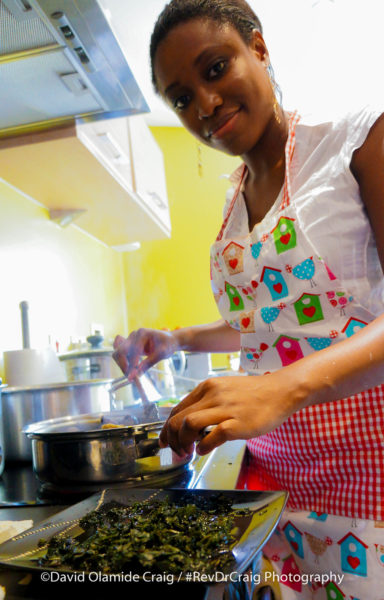 I think the Northern Cuisine is the least understood of all the cultures in Nigeria, which is rather strange, considering that the lion share of the food consumed in Nigeria is grown in the North. As far as popularity goes, Suya and Kilishi are their biggest food exports. Others not as common include Rice Masa, Kunun and Fura drinks. Add Tuwon Shinkafa and Tuwon Masara to the list, and I think that pretty much sums up the knowledge about Northern Cuisine for many people.
I think the Northern Cuisine is the least understood of all the cultures in Nigeria, which is rather strange, considering that the lion share of the food consumed in Nigeria is grown in the North. As far as popularity goes, Suya and Kilishi are their biggest food exports. Others not as common include Rice Masa, Kunun and Fura drinks. Add Tuwon Shinkafa and Tuwon Masara to the list, and I think that pretty much sums up the knowledge about Northern Cuisine for many people.
Research comes with the territory with being a food blogger, and I have found out that a couple of dishes eaten in other parts of the country also has its Northern equivalent. It was not really surprising but it further made the argument for ‘One Nigeria’. I am not being political here, but if through food, we can further highlight our oneness and foster better relationships amongst the different tribes, I am up for it, big time. Here are some of the food similarities I discovered: Miyan Agushi (egusi soup). Miyan Shuwaka (bitter leaf soup). Miyan Kubewa (dried okro soup), Miyan Wake (bean soup a.k.a gbegiri), Dafaduka (jollof rice), Kosai, (bean fritters a.k.a Akara) I am sure there must be more. You may have noticed, Miyan is the native word for soup, just like Ofe in Igbo and Obe in Yoruba.
For this piece, I did not want to make a dish that had a similar interpretation in another culture. I wanted something that was exclusively Northern and I could also source locally. Once I knew what I was going to prepare, finding a recipe and an authentic one at that, was the next step. I went straight to my go to place for everything and I mean everything food. I am a member of a delightful group on Facebook called So You Think You Can Cook. You need a recipe for anything, someone(s) will offer it. You encounter difficulties with your cooking/baking and there will be solutions flying in left, right and centre. You need to source an ingredient locally wherever in the world you live, someone(s) will tell you where. These are just a few of the benefits of being a member. The food knowledge base on that group is very impressive. Three amazing women on the group, Maimuna A. Sambo, Mariya I. Mahmoud, Mansurah A. were kind enough to offer me the recipe for Miyan Taushe and I merged three recipes into one, creating an absolutely fantastic Miyan Taushe. For a dish I cooked for the first time, WOWZER!
You Need
1 small sized Pumpkin
1/2cup of raw Groundnut – you can substitute with groundnut paste
Assorted Namaa – I used Saniya, (lamb chops), Goat meat and cow leg
Assorted Offals – saki, fuku, heart and kidney
1 piece of smoked fish
1/4 cup of dawadawa (locust beans) – iru is another name for it
2 pieces of atarugu (ata rodo) – scotch bonnet/habanero pepper
100g of Yakuwa leaves – sorrel is the English name
1 bunch of spinach – spinach and yakuwa 2:1
1 cooking spoon of Palm oil – optional
1 piece of jan tatasei – tatashe/red bell pepper
2 pieces of tomatoes
1 albasa – onion
Seasoning Cube
Gishiri – Salt
1 1/2 cups of Aborio/Paella rice – for the Tuwo shinkafa
How To
To speed up the cooking process, do all your prepping before you start cooking. Cut the pumpkin into half, then proceed to cut into chunks. Peel the hard outer layer, take out the seeds and the hairy pulp
Boil and season the pumpkin with the assorted meats and smoked fish. You may be able to use canned or tinned pumpkin puree, as long as it is organic i.e. 100% pumpkin with no sugar, salt or flavouring added. If you are using pumping paste or puree, add it to the pot after the meats have cooked.
Take out the meats and fry slightly (optional), meanwhile mash the cooked pumpkin to a pulp in the pot containing the beef stock. You can choose to mash all the pumpkin chunks to a pulp or mash some whilst leaving the others in tiny bite sized pieces. Once this is done, set aside. Roast the groundnut with the skin on for 3 minutes in a pan. (you can use already roasted and peeled groundnut or shop bought 100% groundnut paste)
peel the skin off and then blend in a mill till the groundnut forms a paste
Blend the ingredients for the pepper (tomatoes, onion, scotch bonnet/habanero pepper & bell pepper) and reduce it till most of the water content has evaporated.
Now to cooking the Miyan Taushe.
Put the fried meat back into the pot containing beef stock and mashed pumpkin, let it cook till the stock starts to bubble up. Lower the heat, add the groundnut paste, stir and let it also dissolve. you need to lower the heat to prevent the stock from thickening too fast and burning. The groundnut paste will take roughly 3 minutes to dissolve thoroughly and you will notice that the stock has thickened and taken on an orange colour. Add the dawadawa (or iru) and 1 1/2 cooking spoons of the reduced pepper, and palm oil (if you are using). Stir and let it combine with the stock.
After a few minutes, the contents of the pot should look like this. Simmering nicely, you should be able to taste the groundnut and notice the difference the pepper and the dawadawa make to the flavour profile in terms of aroma and taste.
This rich pumpkin soup will be watery at first. Let it sit on the heat further on low heat till it thickens, thereby intensifying the flavour. Taste for salt and seasoning cube and readjust if necessary. Wash and chop the spinach, then add to the pot.
Stir and let it cook for a minute or two to wilt, while it combines with the soup.Spinach is like a garnish to Miyan Taushe, i.e. the quantity to be used should not be such that the soup will resemble vegetable soup. Therefore, you need the spinach to float around in scattered pieces
Rinse the Yakuwa leaves, chop and add to the soup. This picture below, show you what the leaves look like. They are available in local markets in Nigeria. If you live abroad, you may be able to find it in African stores, or you can simply order online from nurseries. I had these delivered fresh in 50g packs and I used 2.
The yakuwa leaves truly make this dish. Yakuwa has a souring, tangy taste to it which is distinct. In a few minutes after you add it to the soup, you will taste the effect. If the soup is too thick for your preference, add a little water or beef stock and you are done. The vegetables should still be bright green, contrasting nicely with the orange of the soup, so don’t cook for too long.
Miyan Taushe is usually served with Rice Masa or Tuwon Shinkafa. You can cook both side by side if you wish but I will recommend that you do one before the other, especially if you haven’t cooked either of these before.
Tuwo Shinkafa
This is simply rice cooked down till it becomes soggy, and it is mashed to form a soft starchy doughy paste. You don’t use any type of rice for Tuwo Shinkfafa but small grained rice, specifically sticky rice. Do not attempt it with the regular long grain parboiled rice you would use for Jollof or Fried rice for example. It doesn’t have the starch content that you need for a proper Tuwo. You can use Aborio rice or Paella rice. See below:
Wash the rice with cold water, add to a pan, cover with water and cook on medium heat. If you haven’t cooked with this rice before, I recommend that you add just enough water to cover the pot and monitor closely. Medium heat because you don’t want the rice to burn.
Stage 1 of the cooking process, the water will be absorbed by the rice.
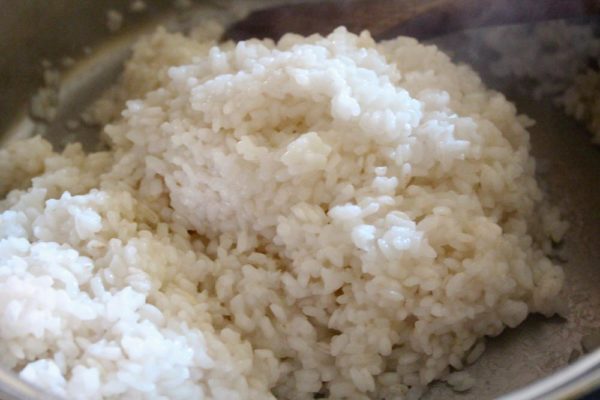
stir and add more water, again just about enough to cover the rice.
Let it cook till it becomes soggy. Try to mash the rice with the spoon and it should flatten easily. If it doesn’t don’t even bother trying to force it or you will become frustrated. Just add more water and repeat the process until the rice grains melt against the pot with little effort and it becomes really starchy and sticky.
This is the result that you want. Once this happens, lower the heat to prevent burning and proceed to folding the rice just as you would when making semovita, amala or fufu but this time mashing with a wooden spoon in the process. Ensure the the heat is on low. You may need to add some more water at some point, and leave to steam. This will make the job of mashing much easier. Just don’t drown it with water.
This will require some arm cardio, but if the rice is soft enough, this shouldn’t take you that much time. Keep mashing and stirring until you have a starchy rice pulp. Tuwo Shinkafa is not meant to be as smooth as semovita or poundo yam for example, so don’t beat yourself up about it. You are not cooking with flour. It is meant to be slightly lumpy and grainy. When you achieve the result below, stop and serve in medium sized balls either by rolling in your hands or using a thin cellophane sheet.
As the Northern Culture is very colourful and gold plays an important part, I decided to go with this and serve in gold accented plates. Saanu to all the Bella Naijarians from the North.
This post is a spotlight on Northern Cuisine, and I would like readers from the North to shed more light on the food from that region and enlighten us all. One last thing if I may be so bold. Dooney’s Kitchen has been nominated for ‘Food Blog of the Year’ for the Nigerian Blog Awards. It would be really wonderful if you Bella Naijarians vote for me. Each vote counts {Vote Here}.
Thank you for the support.
_________________________________________________________________________________
Dunni Obata is an IT Project Manager by day and a cook the rest of the time. She loves entertainment and one of her bad habits is feeding people. When she’s not cooking, she’s watching the Food Network. Dunni is very passionate about Nigerian food and believes it has a lot to offer globally. Visit her blog – www.dooneyskitchen.com

